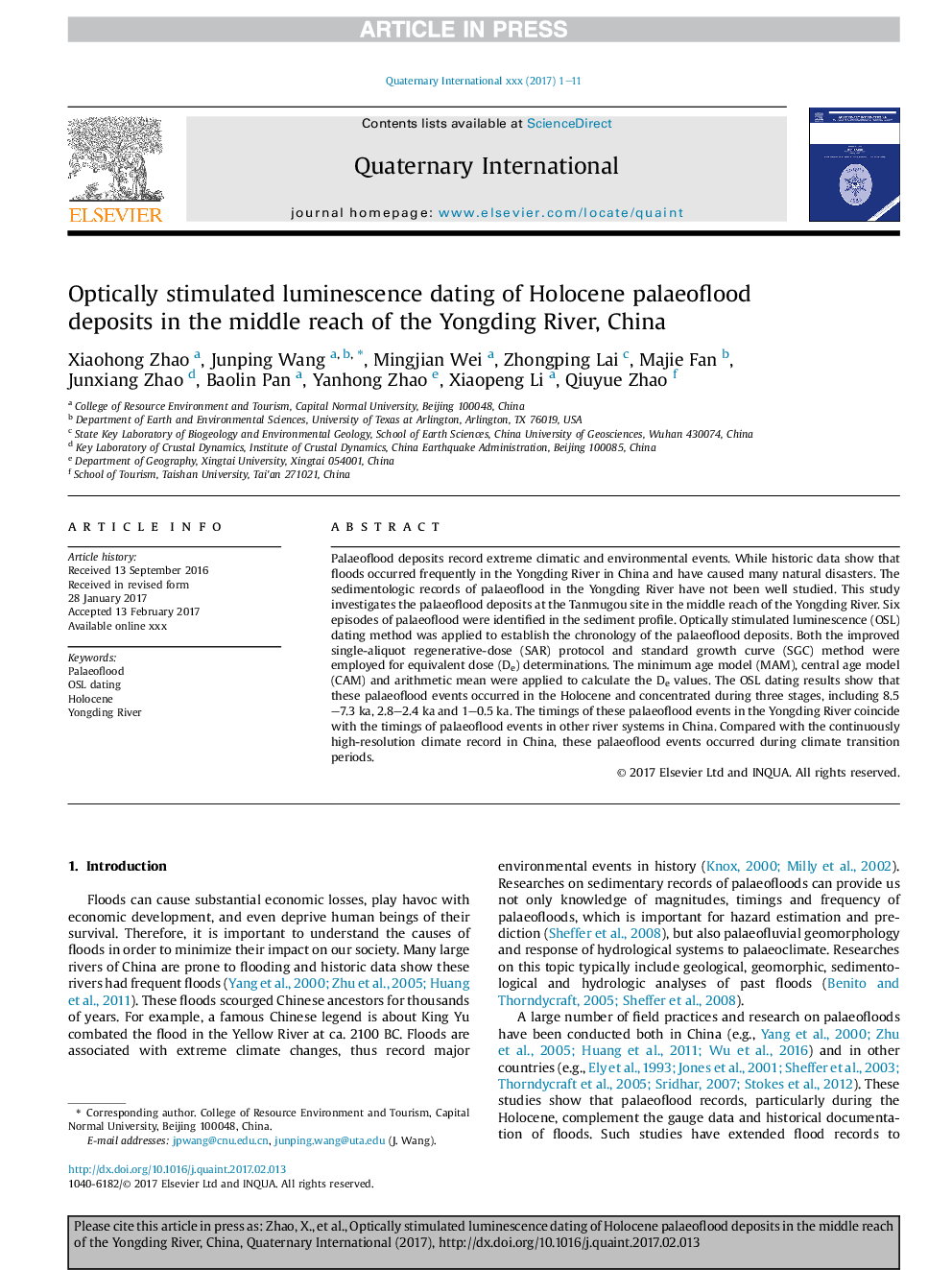| Article ID | Journal | Published Year | Pages | File Type |
|---|---|---|---|---|
| 5113095 | Quaternary International | 2017 | 11 Pages |
Abstract
Palaeoflood deposits record extreme climatic and environmental events. While historic data show that floods occurred frequently in the Yongding River in China and have caused many natural disasters. The sedimentologic records of palaeoflood in the Yongding River have not been well studied. This study investigates the palaeoflood deposits at the Tanmugou site in the middle reach of the Yongding River. Six episodes of palaeoflood were identified in the sediment profile. Optically stimulated luminescence (OSL) dating method was applied to establish the chronology of the palaeoflood deposits. Both the improved single-aliquot regenerative-dose (SAR) protocol and standard growth curve (SGC) method were employed for equivalent dose (De) determinations. The minimum age model (MAM), central age model (CAM) and arithmetic mean were applied to calculate the De values. The OSL dating results show that these palaeoflood events occurred in the Holocene and concentrated during three stages, including 8.5-7.3 ka, 2.8-2.4 ka and 1-0.5 ka. The timings of these palaeoflood events in the Yongding River coincide with the timings of palaeoflood events in other river systems in China. Compared with the continuously high-resolution climate record in China, these palaeoflood events occurred during climate transition periods.
Related Topics
Physical Sciences and Engineering
Earth and Planetary Sciences
Geology
Authors
Xiaohong Zhao, Junping Wang, Mingjian Wei, Zhongping Lai, Majie Fan, Junxiang Zhao, Baolin Pan, Yanhong Zhao, Xiaopeng Li, Qiuyue Zhao,
